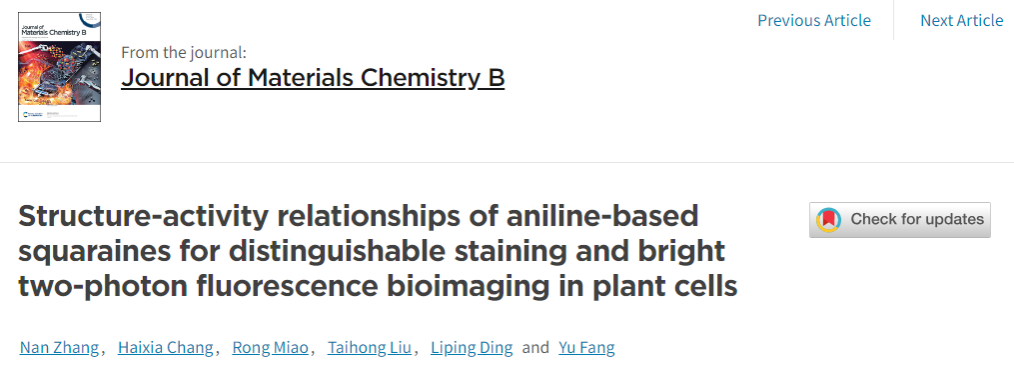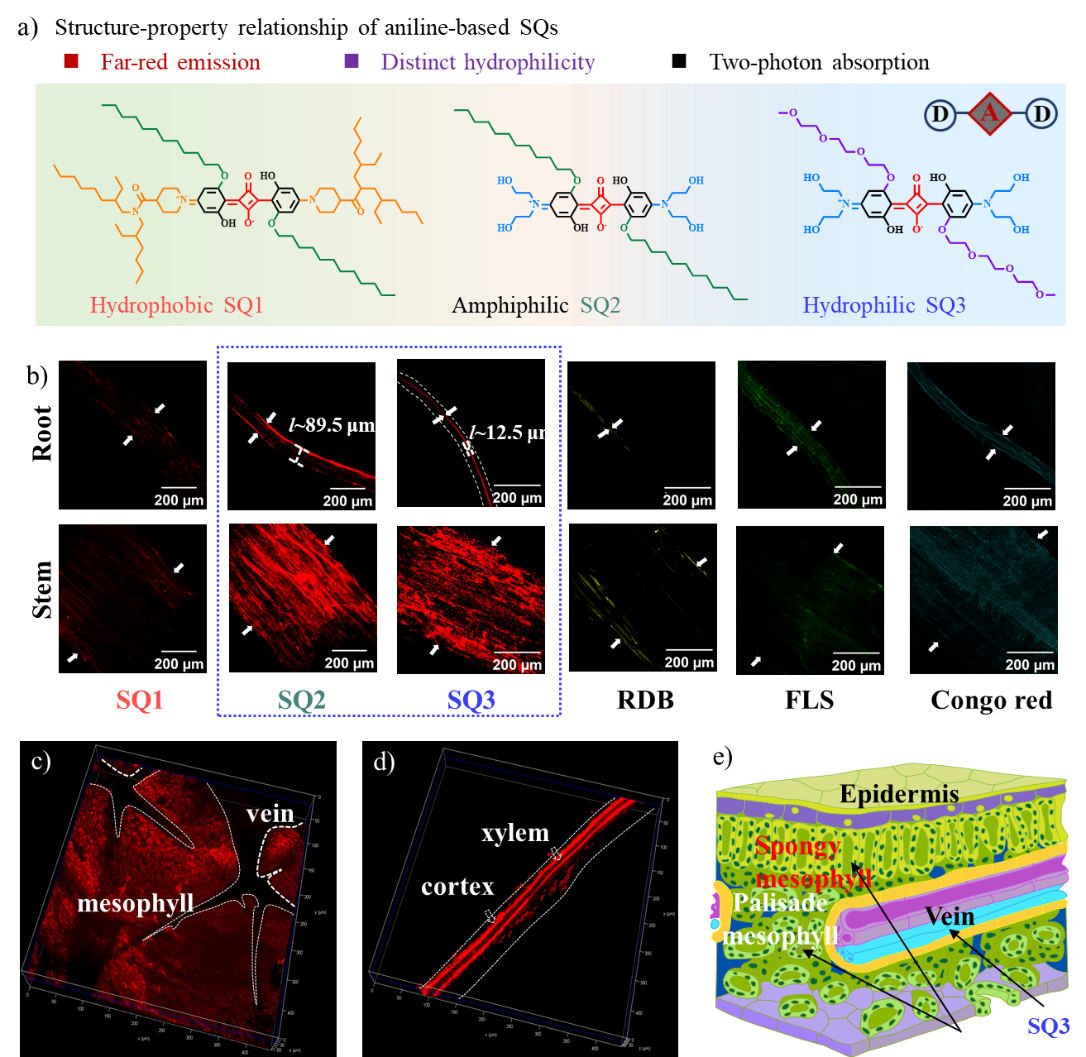
Nan Zhang, Haixia Chang, Rong Miao, Taihong Liu*, Liping Ding, and Yu Fang*. J. Mater. Chem. B, 2024. DOI: 10.1039/d4tb00400k.

Organelle-selective vision provides insights into the physiological response of plants and crops to environmental stresses in sustainable agriculture ecosystems. NIR-emitting fluorophores within the notably biological spectral window (650~1450 nm) are of ongoing interest due to the merits of deep tissue penetration, reduced light scattering, and high imaging signal-to-noise ratio. Novel small-molecule organic fluorophores for specific staining and fixing delimit the cellular contour, thus enabling a clear distinction between extracellular and intracellular components. Therefore, photochemically stable and selective NIR-emitting fluorophores with enhanced brightness are highly desirable. In the past few years, two-photon absorption and two-photon excited fluorescence techniques have advanced significantly in high-resolution bioimaging and photodynamic therapy due to the remarkable advantages of reduced scattering and ignorable auto-fluorescence of normal tissue. Regarding efficient two-photon excited fluorophores, their characteristics of high two-photon absorption cross sections and rational incubation play important roles in practical applications, e.g., bioimaging.

Figure (a) Molecular structures of the three aniline-based squaraines; (b) Temporal monitoring of squaraines and commercial fluorophores in the roots and stems; (c, d) 3D two-photon fluorescence microscopy images of the Arabidopsis leaf incubated with SQ2; (e) Diagram of the Arabidopsis leaf architecture and cell landscape.
In this contribution, three aniline-based suqaraines (hydrophobic SQ1, amphiphilic SQ2, and hydrophilic SQ3) tuned from hydrophobic to hydrophilic characteristics were obtained, and their steady-state optical properties were first studied. Modifications of increased steric hindrance close to the squaraine core aided in reducing their self-aggregation. Broadband two-photon absorption and excellent two-photon absorption cross section values were acquired based on the open-aperture Z-scan method. The maxima two-photon absorption cross section values of amphiphilic SQ2 and hydrophilic SQ3 were found to be ~1060 GM and ~1220 GM at 800 nm, respectively. Mimicked biological applications in the plant cells were further conducted by the confocal laser scanning microscope. Interestingly, though similar absorbance spectra of the squaraines in neat solvents, corresponding apparent differences were observed in the cellular trials. Rapid uptake and uniform distribution of hydrophobic SQ1 in the onion epidermal cell wall were investigated. Amphiphilic SQ2 had special affinities to the vacuole and nucleus, unlike the hydrophilic SQ3 differently attached to the former. Based on the two-photon fluorescence microscopy, comparative staining profiles in the roots and leaves of the Arabidopsis seedlings were accomplished. Deep tissue penetration and high-resolution three-dimensional reconstruction in the plants were further demonstrated toward bioimaging applications.
This paper is selected in the themed collection: Journal of Materials Chemistry B HOT Papers.
First Author: Zhang Nan, master’s candidate, Shaanxi Normal University
Correspondence Authors: Prof. Fang Yu, and A/Prof. Liu Taihong, Shaanxi Normal University
Full Text Link: https://doi.org/10.1039/D4TB00400K